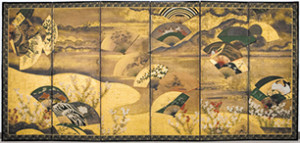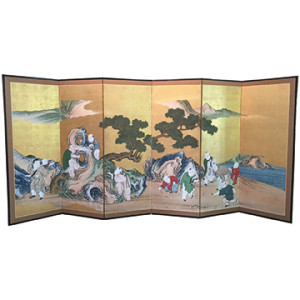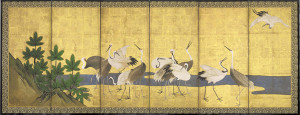There’s nothing like a Japanese wall screen to add a touch of glamour to a condo wall. Best of all they can be as old or new, affordable or expensive. There are great bargains at auction even for Meijii(1868-1912), while those from the Edo period (1603-1867) can cost thousands of dollars.
Historically, painted folding screens originated in China, depicting scholars and landscapes in black and white. The Japanese adapted their techniques adding bright painted colors, gold and silver leaf or foil. Surprisingly what comes to market these days can be anything from the Edo period to contemporary. Sizes commonly range from two panel to six panels.
The finest screens, signed by noted artists of the period were used as diplomatic gifts. They also played an important part in Shinto or Buddhist settings.
What dictates the price isn’t necessarily age or signatures, but beauty and subjects.
Americans have had an ongoing love affair with Japanese screens since they first traveled there, after Japan opened to the Western world in1868. Interest was revived when American soldiers brought home examples after World War 11.
Today many of the finest examples centuries old, are in museums or come to major auction houses such as Christies. However when Asia Week opens from September 8 to 16 in New York, opportunities to buy at all prices will abound.
CLUES: Knowledge and research can be all important to a fair price. Condition is all important since these are fragile paper works of art. Too much gilding and repainted faces or figures lessen values. Painted areas should feel a bit rough from the grit used in the original mineral colors.
If you like the look, museum gift shops offer beautiful printed reproductions.


















Follow Us